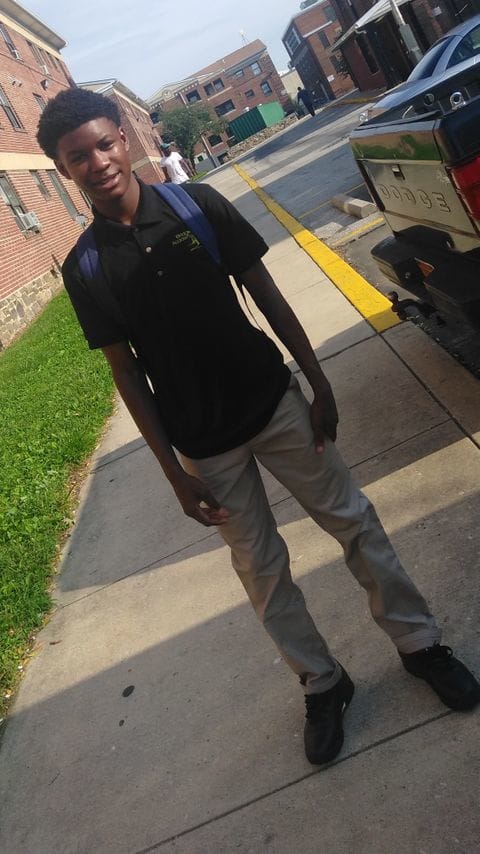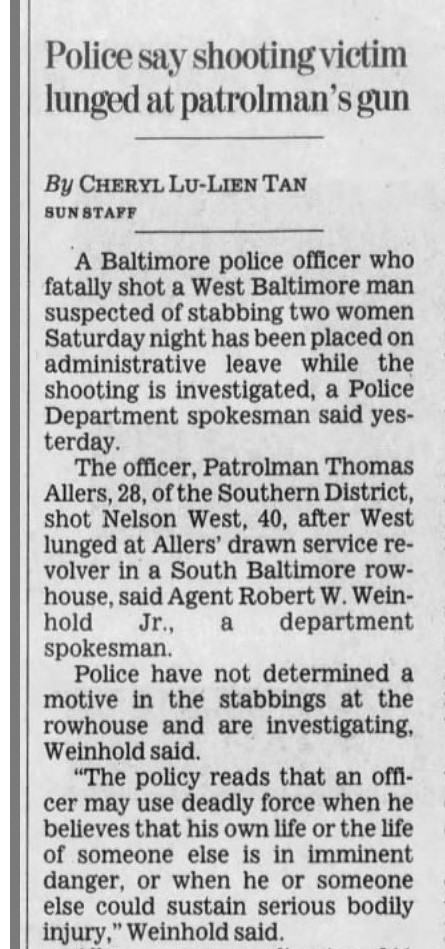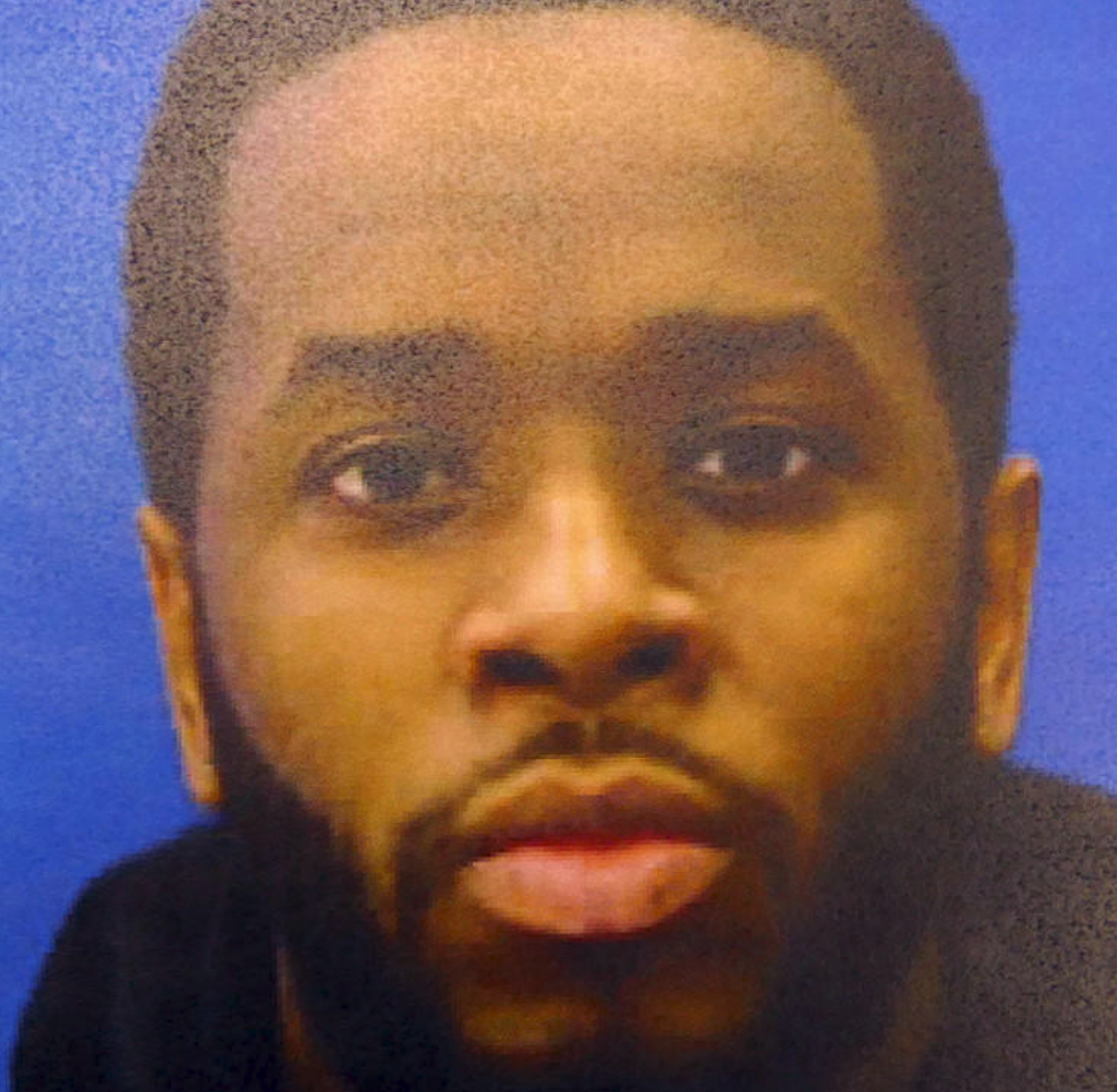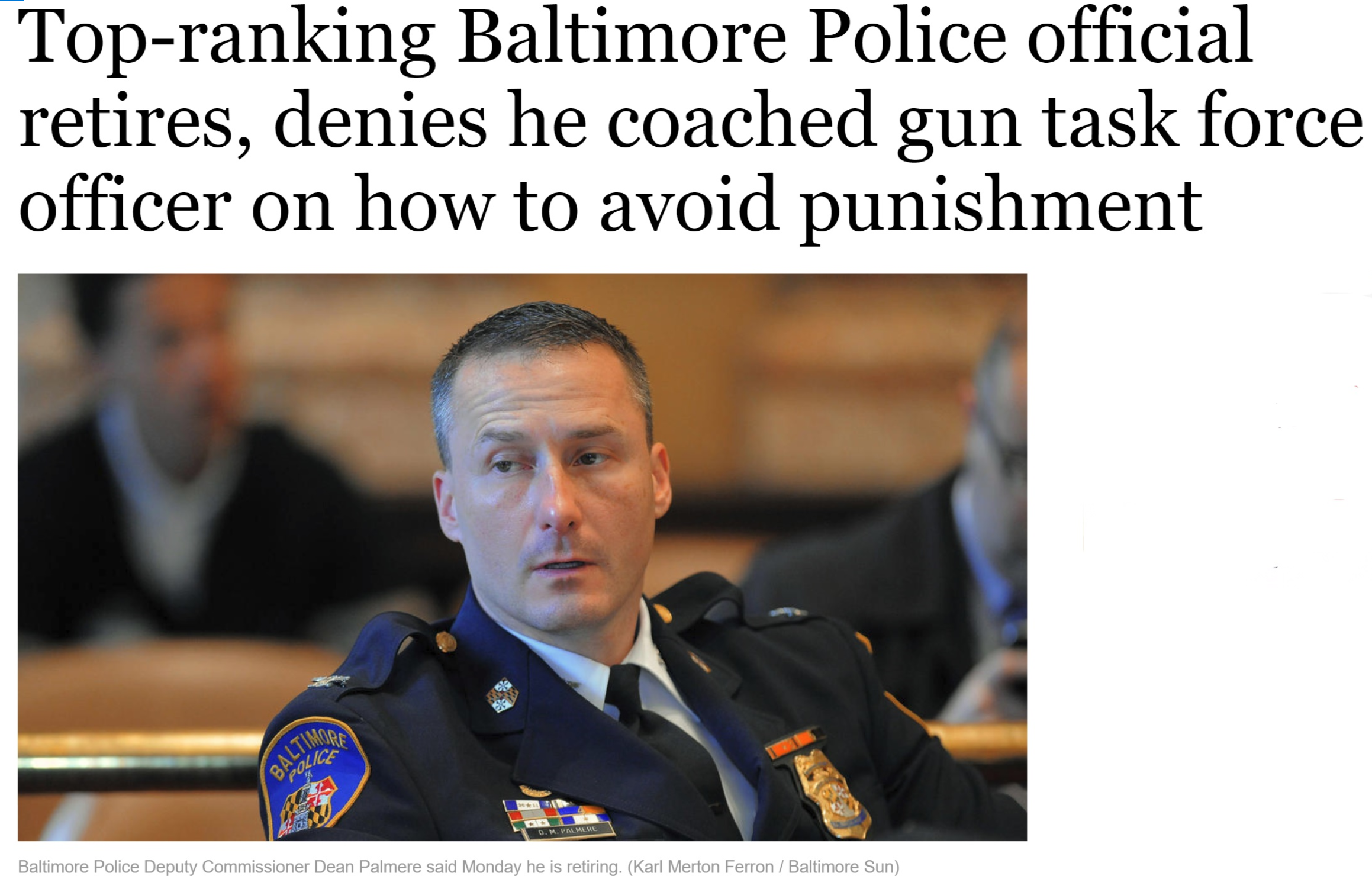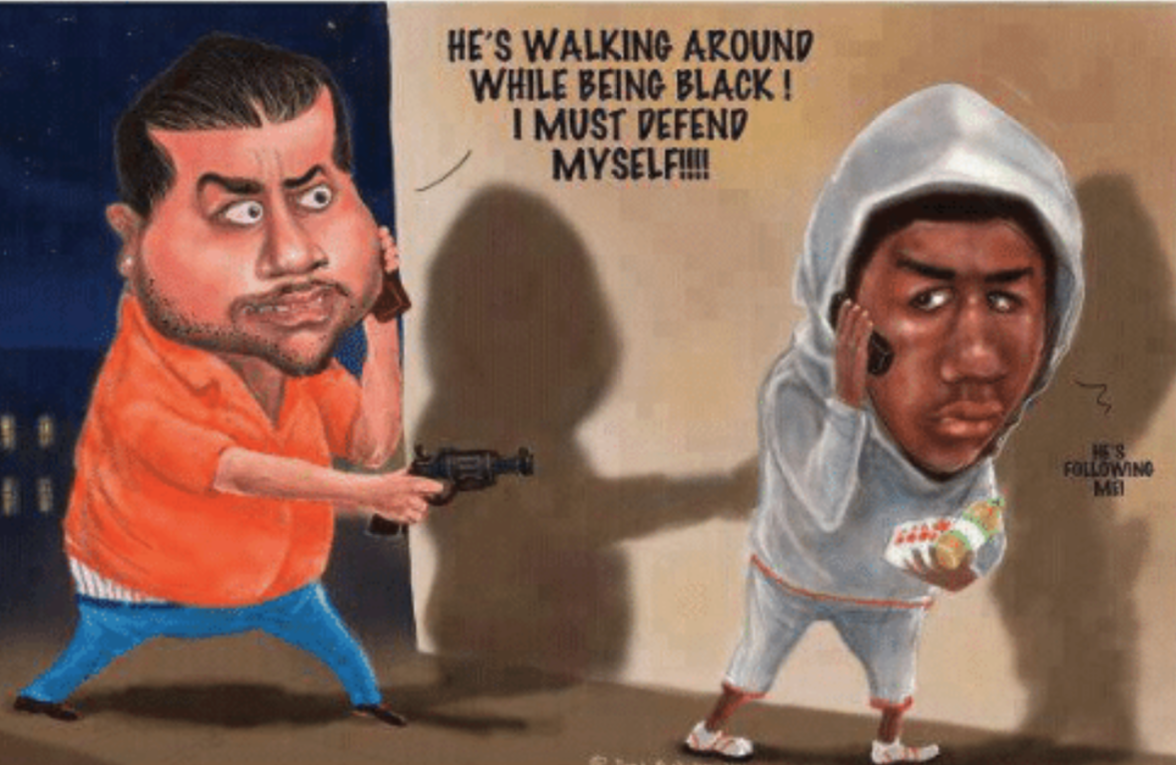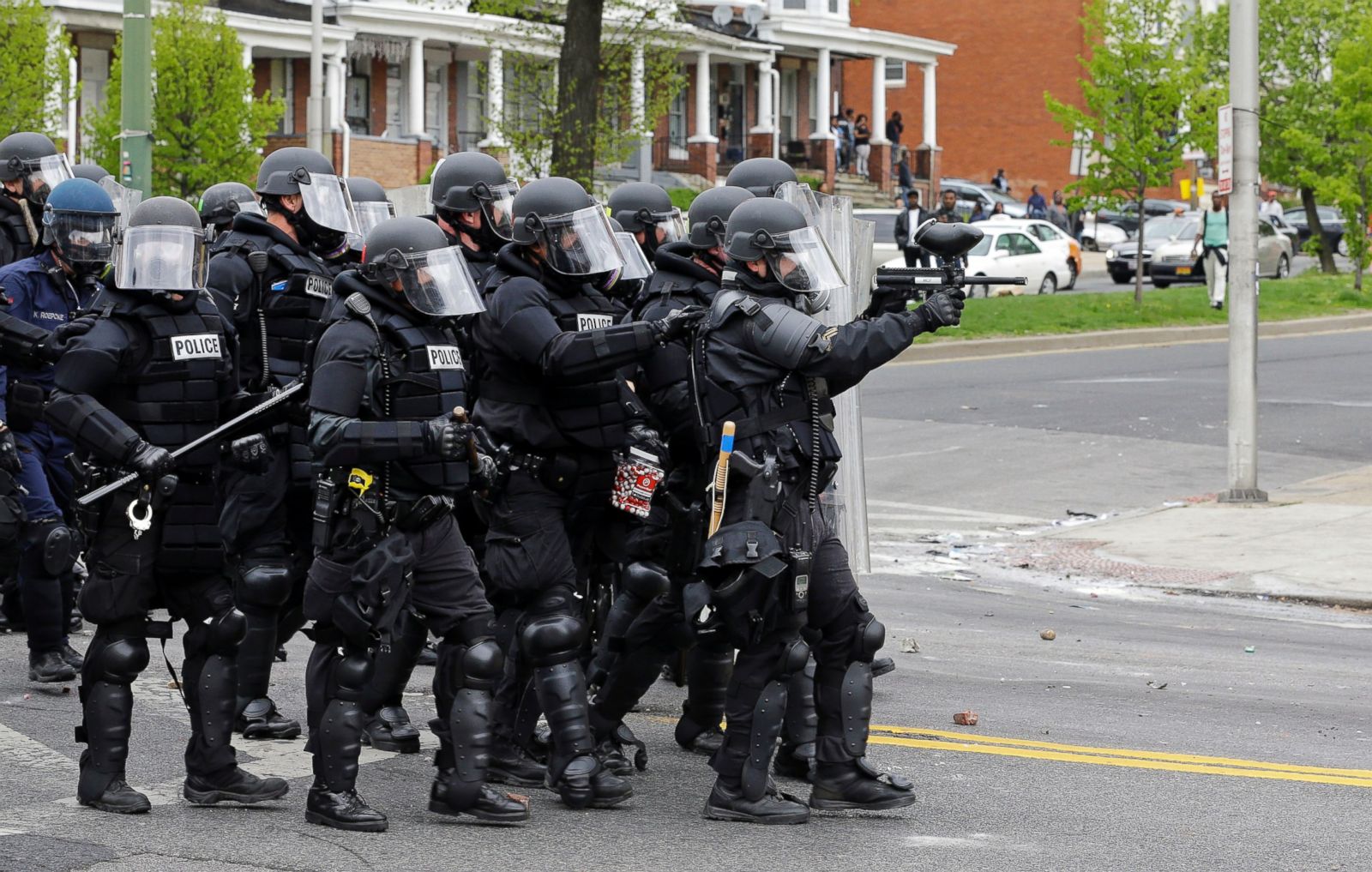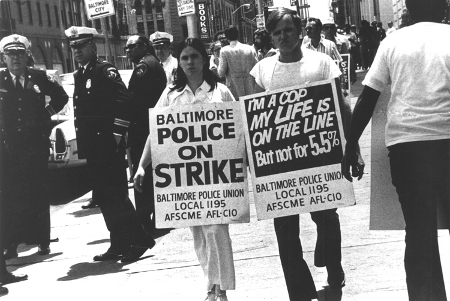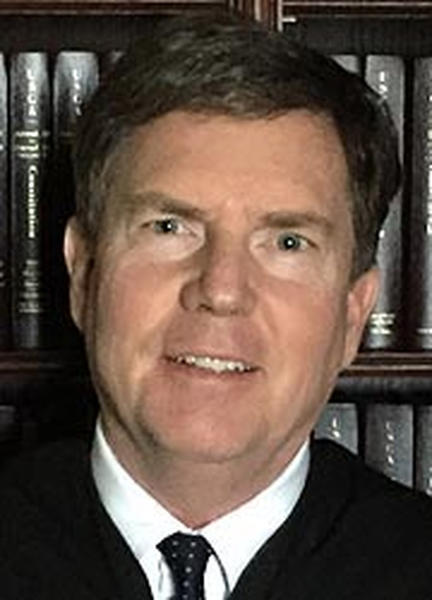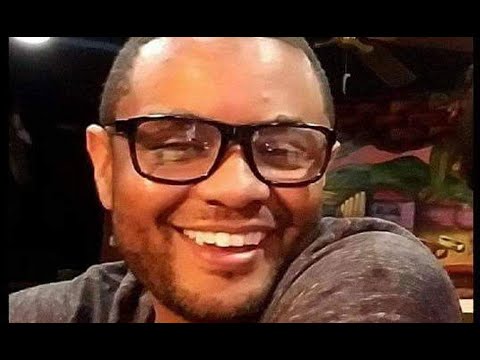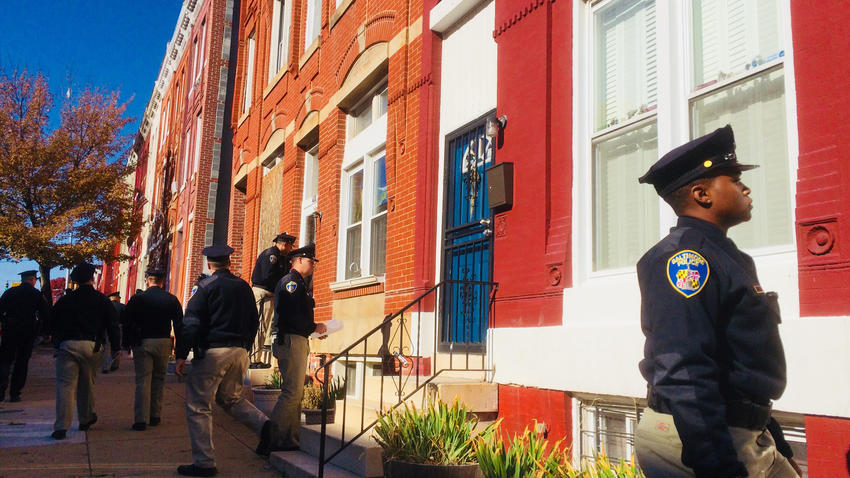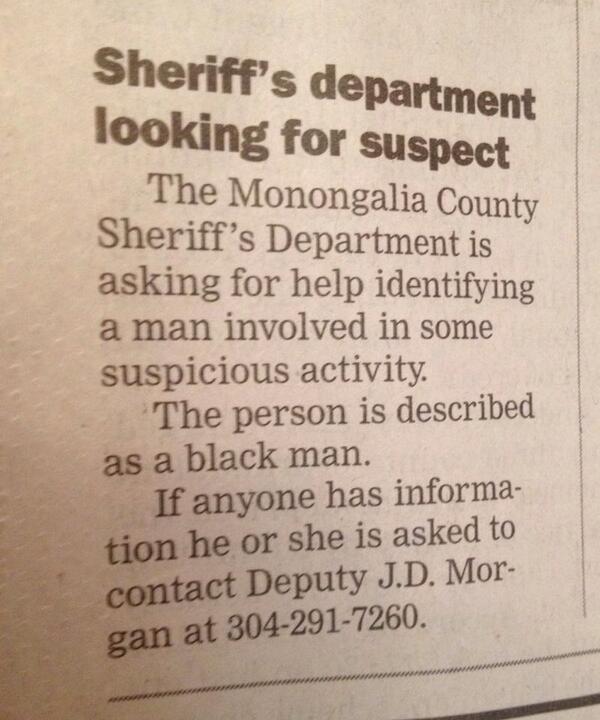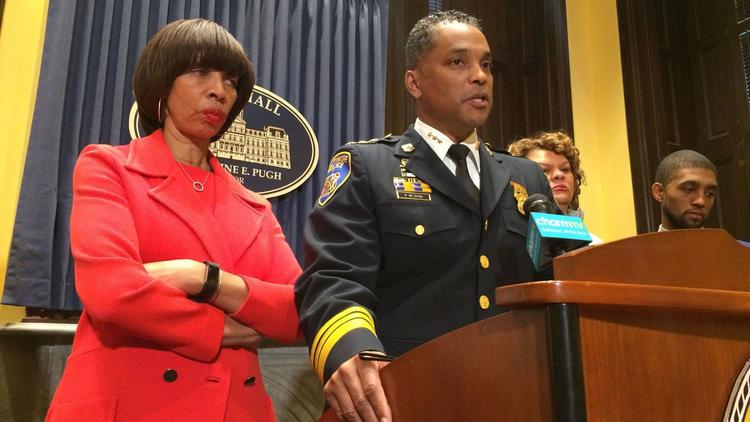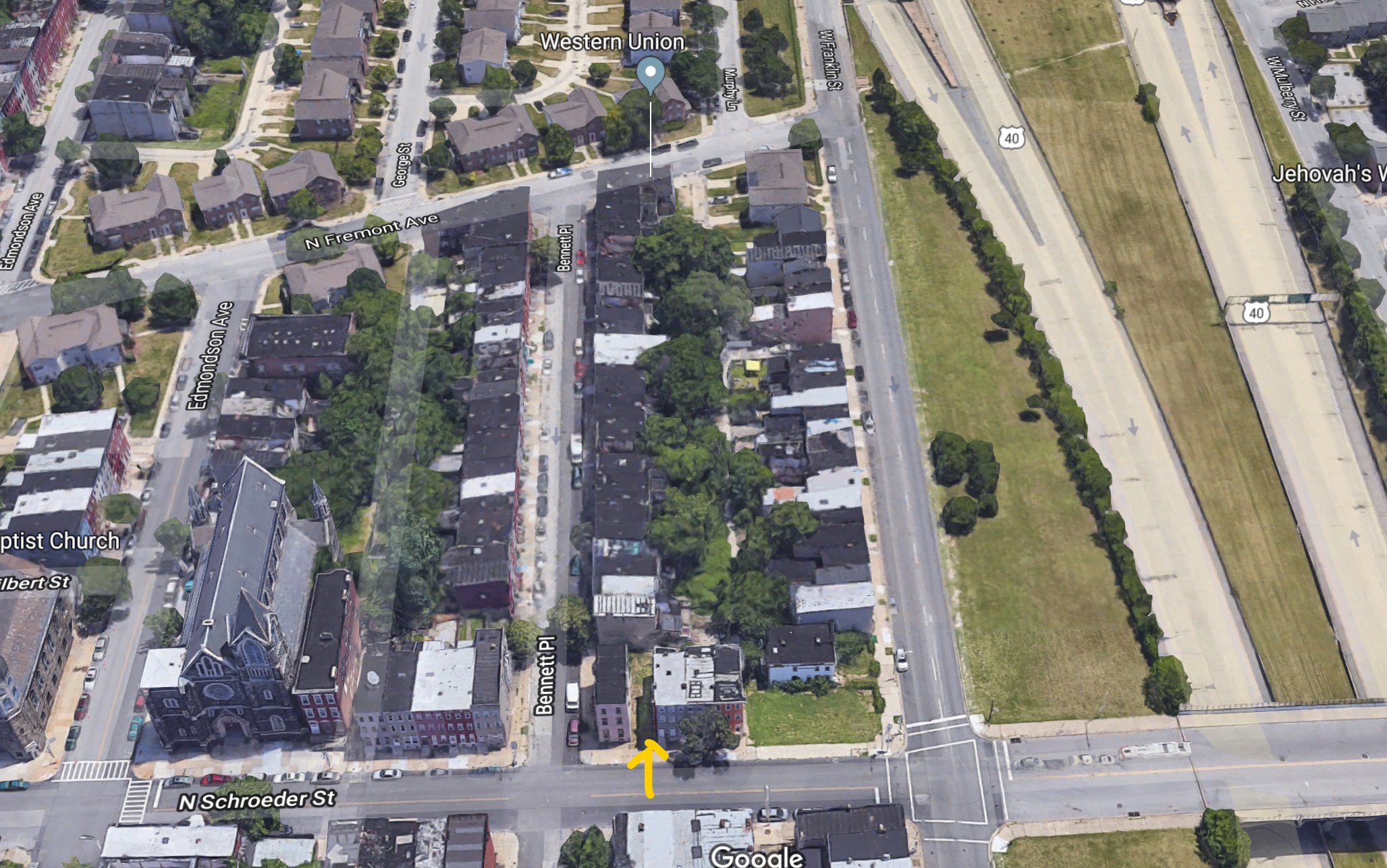David Simon is what Baltimoreans gleefully call a wannabe from the Dee Em Vee.
The Montgomery County native, 61, is mostly known as the creator of HBO’s The Wire, a fictional cop drama set and filmed on location in Baltimore. Credited for its realistic portrayal, Simon and his collaborator Ed Burns, a former city police detective captured the distinctive voice of the streets of Baltimore.
When the series debuted in June 2002, The Wire was applauded for its nuanced characters not often found in Hollywood. Simon’s narrative storytelling of Baltimore’s intricacies was compelling and layered. After its fifth and final season wrapped, the set was broken down, and the lights dimmed, all that was left behind were the tragic lives of the real people whose stories were told for profit by outsiders.
Twenty years after The Wire, Simon is back at it again with HBO, this time as the creator of We Own This City (WOTC), a fictionalized portrayal of a 2021 true crime book written by then Baltimore Sun newspaper reporter Justin Fenton also set in Baltimore. Similarly, critical acclaim was bestowed on the dialect and scenery that captures the small city with a big heart. But what is different from years that preceded The Wire are two major factors:
- the emergence of the Black Lives Matter movement (that includes the city’s uprising after the in-custody death of Freddie Gray in 2015)
- the relevancy of social media in swaying public opinion (and subsequent cancel culture)
The lives of Blacks in the country mattered decidedly less when The Wire was greenlit, yet David Simon has not changed with the times. It is Simon’s continued public and unapologetic use of the word “nigger”, that has found the white man from the DMV himself way down deep in a hole since The Wire wrapped. When WOTC‘s controversial final episode aired on May 20, 2022, it was totally on brand that Simon dismissed concerns about his role in the post George Floyd era of policing.
Simon embeds himself within the ranks of BPD as its “intern”
Gaining access to police sources takes talent, trust, and time on the part of journalists. As does all institutions with something to hide (Catholic church, NCAA, NRA, political parties, and law enforcement come to mind), its caretakers are wary of members of the press for fear of what could be revealed. By the early 1980s the skeletons in Baltimore Police department’s closet had spilled onto the floor and were piling up in all the corners. An astute observationist like David Simon would have to be blind not to see it. Unless his promised proximity to police culture to gain their trust shaded his objectivity.
David Simon was a cop. After a few years on his journalist job, Simon took a leave of absence from The Sun and became a “police intern” at Baltimore City’s police department (BPD). He spent a year embedded within BPD learning their language and meeting their families. History has revealed that while his decision served neither journalism nor the general public of Baltimore very well, it was a huge “come up” for the beat reporter. In a book, Simon chronicled his experiences as a cop using the voice of what he called “the communal homicide detective.” Gaining unfettered access to police would prove that loss of objectivity was the price he would pay.

Simon looks to have made a deal with the devil. The violence against Black lives predates “police intern” Simon’s illegal stop and frisk days at BPD. The historic systemic racism that permeates BPD was documented in a scathing 2016 report by the US Department of Justice (DOJ) that includes empirical evidence of its patterns and practices of civil rights violations against Blacks. The very institution of policing is the villain in the sage of Black lives, not Simon and certainly not “drug wars”.
People who have lived in the city for generations have long memories. In the case of David Simon, people have not distinguished him from other cops when he was embedded along side them. BPD Commissioner David DeSousa in 2018 apologized at a rap concert for 200 years of racialized policing in Baltimore. Even the staid institution of The Baltimore Sun recognized its contribution to stoking racial discord when its editorial board issued an apology early this year. BPD, on the other hand unapologetically maintains its status as the most funded agency in the city at over a half a billion dollars annually.

BPD’s historical occupation over the city’s Black citizens on horrific display in Harlem Park in 2017 is in some measure owed to a young and ambitious cub reporter from the DMV who chose to be a big city cop for a year in 1988. When Freddie Gray was brutalized by officers which led to his death, Simon chided BPD for breaking the code. The resulting uprising was in Simon’s view because of failed policies he told the Marshal Project in a 2015 interview.
“I’m talking in the vernacular of cops, not my own — but even in the vernacular of what cops secretly think is fair, this is bullshit, this is a horror show. There doesn’t seem to be much code anymore.”
David Simon, on why Freddie Gray who didn’t meet the criteria should not have been beaten by BPD.
Simon’s latest venture documenting BPD culture excluded the obliteration of the code on display with the death of a Baltimore cop two years after Freddie Gray’s death. In an overtly illegal and brutal show of force, BPD locked down of over 10 square blocks in West Baltimore. The week-long occupation was covered in Fenton’s WOTC book, but quizzically excluded from Simon’s Hollywood portrayal of the GTTF.
Why Simon chose to omit actual evidence of BPD “owning the city” instead of settling for mere hyperbole has not yet been addressed. Albeit, it is not too surprising in hindsight since the police action prompting cries of #FreeWestBaltimore received precious little journalistic interest in real time. Since both the FBI and the DOJ were on site during the “lockdown” it served the feds well not to be eager to discuss BPD’s wanton display of police power. The Harlem Park lockdown is what happens when “police say” journalism takes precedent for fear of losing access.
During the lockdown/occupation, over one hundred Black residents of Harlem Park were routinely stopped by police, without any individualized suspicion of wrongdoing when they came and went from their homes. Instead in the Simon-orchestrated HBO version of history, GTTF chose to illuminate the failures and flaws of individuals like Wayne Jenkins.
The departments’ abusive actions on that day were so atrocious against residents living near the crime scene that it in response to a lawsuit, the commissioner issued a rare public apology.
[Black residents] were required to identify themselves, and their names were run through law enforcement databases. Police officers were posted at each block, alleyway, and corner, and police checkpoints were at each intersection.
ACLU Maryland
Leaving the tragedy and aftermath of the Harlem Park lockdown on the cutting room floor is one of the most cop-like acts David Simon could have ever done.
Sean Suiter as a Casualty of Simon’s Blind Spot
Lately, much of the ire directed at Simon on social media #BaltimoreTwitter centers on his depiction of the shooting death of a Black homicide detective in the line of duty that occurred in November 2017 in the Harlem Park neighborhood that preceded the lockdown. It is a case that remains unsolved. The detective, Sean Suiter, was killed the day before he was scheduled to testify as a federal witness in a corruption case involving multiple members of the department’s Gun Trace Task Force (GTTF) plain clothes unit.
To Fenton’s credit, his reporting in WOTC depicts with clarity the extent of the BPD’s propensity for criminality and coverups, if only anecdotally. To Simon’s chagrin, because Fenton’s book maintains objectivity, but Simon’s decided to deviate from the book and go full bore just to echo a BPD’s narrative is quite telling.

In the dramatization, Simon took creative license to underscore the scenario of suicide, a hypothesis that embraces BPD culture and dismisses journalistic responsibility. It is also in contrast to the Medical Examiner’s determination of homicide.
Fenton’s book chronicles the federal court cases involving the specialized unit he previously referred to as “elite” within the BPD which for years operated a robbery and drug ring while on duty. Before becoming a homicide detective Suiter, a native of Washington DC, was a member of GTTF.
A timeline of events that preceded Suiter’s death could be construed that he felt building pressure to snitch against his brothers in blue or that higher up in LE were seeking eliminate remaining potential threats. In October 2017, a key defendant ex-GTTFer Jemell Rayam plead guilty for his involvement in the department’s criminal conspiracy and became a witness for the prosecution. Suiter, died from a bullet wound to the head the day before he was scheduled to testify (presumably to corroborate details what Rayam offered in exchange for his cooperation).
Two weeks after Suiter’s death in early December 2017, Sgt. Thomas Allers pleaded guilty and declined to cooperate with the government. All the while Harlem Park was under police guard. The lone holdout, Wayne Jenkins finally entered his guilty plea in January 2018, the same month the trial began for two members who did not take a deal, Daniel Hersl and Marcus Taylor (who both were found guilty).
The circumstances involving Suiter’s death are as improbable as they are disturbing. The family man who had a reputation for professionalism was murdered in broad daylight – with what they have indicated was a department issued handgun. Suiter was discovered in a vacant lot near an alley in a section of Baltimore known for being a bastion for unsolved violent crimes. The single bullet to the head occurred while he was accompanied by another officer, who was not his usual partner.
The changing statements from that day’s partner, David Bomenka, provided the context for the collection of police evidence and the interpretation of same that followed. It is at this point the elements of a cover up (if not a conspiracy) takes root.

One independent journalist has persistently taken local media to task for merely parroting the narratives spoon-fed by BPD about proposed evidence without consideration of BPD’s history of lying and manipulation. “The media has largely accepted these prevailing myths, in part because there was a battle inside BPD over what happened to Suiter, what the Sun called the “two conflicting theories,” wrote Justine Baron on her website TheSuiterFiles.com.
Violations of Journalism 101 are many when it comes to covering Sean Suiter:
- Journalists ceased amplifying the fact that when medical transport arrived, Suiter had been carried and placed inside of a patrol car (and dropped in the process) by BPD officers first to the scene. BPD said that the delay had no relevancy to the investigation.
- No further investigation was made of the patrol car carrying Suiter (the driver has not been publicly identified) got into two accidents en route to the hospital.
- No ownership of the decision to disturb the crime scene (and perhaps cause additional injury) and move Suiter from the lot.
- Suiter’s gun, later proclaimed to be the murder weapon, was removed from the scene and recovered in a patrol car’s trunk – at some undisclosed time later, with zero explanation by BPD.
- When officers responded, it was to an “active shooter” scene, in accordance with the information given by the only eyewitness, Suiter’s partner that day.
Jamie Hector’s performance as Sean Suiter earned the character a tragic figure moniker. In an episode guide, it surmises that “faced with the prospect of testifying against his fellow cops, and losing the job that he loves, he tragically commits suicide.” The suicide narrative championed by Simon and BPD has been engrained in the annals of television.
“Suiter is cynical and hopeless, faced with rejection from his colleagues if he chooses to testify and possible prosecution if he doesn’t. He also risks losing his job if, in testifying, he reveals to the FBI that he witnessed, and did nothing about, the GTTF’s crimes.”
Rebecca Bihn-Wallace, June 12, 2022 MSN.com
David Simon Crosses the Line
Simon may have left journalism, but it did not stop journalists (and others) from coming for him. Simon told the “Twitterverse” that he believed the cops when it came to the unsolved case of Sean Suiter’s death. Surveillance video of the moments that lead up to the shooting was stolen and (likely destroyed by BPD). A second camera provided grainy footage that generates more questions and the answers that it provides. Some see this action as further indication of a cover-up.
The barrage of criticism against the once-BPD “intern” turned Hollywood showrunner was swift. Suiter’s friend and attorney drew first blood:
Nice reminder that facts don’t matter when they get in the way of dramatizing crime in Baltimore
Jeremy Eldridge, Sean Suiter’s Attorney, Twitter May 30, 2022
In classic Simon fashion, he defended his position against Suiter’s attorney with the bluntness of a chainsaw in a pillow factory: “Your client took his life in advance of his grand jury testimony….he would likely lose his job as a result of the revelations forthcoming. This is regrettable. It is also entirely true,” Simon posted on Twitter.
It’s not known whether Simon intentionally tried to sound like the verbalization of a cop’s internal dialogue, but he succeeded. What Simon says is very much in line with how cops think: Suiter felt so strongly about the remote possibility of losing his job that he chose a risky attempt to portray his death as a line of duty homicide. Cops (and Simon) believe Suiter took a less than 50/50 gamble in order to provide for his family financially by hoping Bomenka fell for him staging his suicide to look like a homicide.
By any calculation a staged homicide was an unfathomable risk given that recent history has shown that many LE come out the other side of prosecutions largely unscathed. Even if after testifying Suiter ended up a disgraced former LE, he could find gainful employment as a media analyst or Baltimore drive time talk show host if not a professional police review panel member.
There’s no debate that the central evidence in the Suiter cold case is the lone eyewitness, Det. David Bomenka. He is the man that Simon has placed the utmost trust in. Simon has more faith in Bomenka than Suiter ever did. Suiter was leery enough about helping Bomenka on his case that Suiter grabbed a police radio before venturing out with the man he barely knew.

Homicide detectives rarely take a police issue radio, preferring to use their cell phones while in the field. If a detective wanted extra assurance when paired with a person they did not trust, then that would be a reason for carrying a radio. Sean Suiter’s last words were captured on his radio transmission. Although it’s not conclusive, it sounds as if Suiter is saying to ease someone else’s concern that he was close to: “Don’t worry about it.”

Activist Leslie Mac asked Simon on Twitter how a former beat reporter responsible for covering BPD for years still gives credence to the version of facts presented by BPD and the FBI. Mac suggested that Simon’s white privilege clouds his judgement, Simon responded in typical fashion:
Moron, the FBI broke open the entire scandal of the GTTF. They uncovered the corruption. And the evidence of the suicide comes not from the BPD but from an independent investigator. So basically you only with to credit your own unevidenced imaginings. Got it. Christ Almighty.
David Simon @AoDespair R/T of Leslie Mac June 4, 2022 ,Twitter
Barely anyone in the city trusted BPD to investigate Suiter’s death with the exception of David Simon. Certainly no one did who was familiar with the failed prosecution the year prior of the officers present when Freddie Gray was fatally injured while in custody trusted that BPD would be respectful of West Baltimore residents. With no public confidence and lacking in overall legitimacy due to the DOJ, BPD’s leadership asked the FBI to take over the investigation and it declined, making national news.
Simon has often evoked the Independent Review Board (IRB) conclusion of suicide, without mentioning much how the IRB was bought and paid for by BPD and that members included two former BPD officers. The IRB was commissioned to look into the Harlem Park lockdown, but it failed to do so.
The DOJ’s Consent Decree’s monitoring team soon after the lockdown indicated that its job was not to investigate the lockdown: “… it is not appropriate for the Monitoring Team to interject itself into an active crime scene investigation or to assume the role of BPD command staff by intervening in BPD actions.” However, nine months later the IRB punted.
“The IRB has not analyzed this [lockdown of Harlem Park], and incorporates by reference the work of the BPD Monitoring Team,”
Report to the Commissioner of the Police Department of Baltimore City Concerning an Independent Review of the November 15,2017 Incident and Its Aftermath, August 2018
In the months that followed Suiter’s violent and suspicious death, the city was in extreme turmoil: The top cop was fired by the mayor. The person the mayor promoted to the position (Darryl DeSousa) was forced to resign after being charged for federal tax evasion. (These events depicting the dysfunction were included in the HBO portrayal). The city was failing to meet demands of the consent decree to reform its police department that it entered into after the 2015 death in police custody by Freddie Gray.
With political pressure mounting, BPD hired a panel to provide the public with an explanation of the innerworkings of their investigation. They called the panel the Independent Review Board IRB). The IRB’s processes and deliberations were conducted in private; their members were selected by BPD and they were paid by the department.
A year later, citing flaws in the IRB report (no one from the family was questioned in the process), Suiter’s family publicly decried the BPD investigation (and IRB’s review of same) as corrupt. It seemed that the thin blue line left the grieving officer’s family on the outside looking in. Suiter’s wife and children said what most of Baltimore was thinking: that whoever is responsible for the murder was within the department.
“It’s just too much of a coincidence — the day before he was due to testify. It looks like an inside job,” Sean Suiter’s eldest child, Damira, 27, said Tuesday night.
Justin Fenton, Baltimore Sun, May 1, 2019.
The medical examiner’s ruling in Suiter’s death is and always has been homicide. The state’s attorney called the case “open and pending” after BPD prematurely announced that it was closed in November 2019. Simon blames most of BPD’s abuses (but not its systemic racist practices) on the failings of drug war era policies.
In response to the backlash, David Simon has promised to outline his rationale for believing the cops’ theory of suicide in an essay.
From a white boy from the DMV to a Wannabe BPD-er
Simon’s road to Baltimore began in Silver Spring, MD and traversed through his admittedly mediocre years as a University of Maryland student in College Park. Upon graduation, he took a journalist job reporting for the Baltimore Sun and worked there for nearly 13 years before a parting of the ways in 1995.
Simon described his departure from The Sun as a result of his growing frustration of corporate influence along with editors stifling his burgeoningly creative narrative voice. As a young reporter, Simon’s strength was storytelling. He took a year leave in order to be embedded with Baltimore Police in search of more stories to tell. It was a gamble though that paid off. Director Barry Levinson (a true Baltimorean) optioned his book for a $10,000 pay day for Simon and turned it into a hit television show for NBC.
Buoyed by the success of his 1993 book Homicide: Life on The Killing Streets Simon’s request for a raise in pay at the paper was rebuffed. The Sun newspaper had had enough of David Simon. Before taking a buyout and leaving journalism for good, Simon thought the Sun would be his first and only job, he told Chicago Tribune in a 2008 article.
The then-owners of the Sun likened Simon’s hold onto a decades-old grudge to a character flaw. His anger issues, Simon said, are not directed at individuals, but towards the decline in journalism, they said in the same article. Not to worry, in 2012 Simon joined Twitter and his penchant for harvesting grudges would be on the world stage and undeniable.
Cashing in on Baltimore
David Simon’s year embedded as a reporter shadowing BPD homicide detectives was recounted in his 1991 book “Homicide: A Year on the Killing Streets.” Director Barry Levinson (also from Baltimore) optioned the book for $10,000 and it became an award-winning television show, earning him a best director Emmy in 1993 and Andre Braugher an Emmy for best actor in 1998.

The Baltimore-based Hollywood successes linked to Simon’s stint as what amounts to a junior cop is as follows:
- Homicide Life on The Streets (1993)
- The Corner (2000)
- The Wire (2002)
- We Own This City (2022)
Like The Wire, WOTC is just a television show. Where they differ is that The Wire was loosely based on real people but was clearly a fictionalized representation. WOTC is a true story. Real people, suffering families, and the ongoing trauma of Blacks in the city, especially West Baltimore is not a figment of anyone’s imagination.
The Trouble With Outsiders
Granted, a great amount of not liking Simon is strictly personal, and not about his business at all. Objectively, Simon is largely viewed as a disagreeable and crass human being. (Simon was banned from Twitter for a death threat in 2018). His delight is visceral when he blocks people from viewing his Twitter account while insulting their intelligence for disagreeing with him. His admitted favorite insults lobbied at people are asshole, idiot, moron, scrotesniff, fuckbonnet, taintlick, and gibbering submoron.
Simon, in the post Trump years, still also manages to squeeze in an occasional motherfucker or nigger (more on Simon’s use of “nigger” in this series’ next installment).
That Simon is from the DMV instead of from Baltimore some may believe is at the crux of the disdain he evokes from locals. They would be wrong, mostly. People are growing weary of Simon because he has not atoned for having some of the city’s most dangerous cops as friends.
One such case highlighted in the book that launched Simon’s career stemmed from when he had extraordinary access to LE. It included the conviction of three Black teenagers for killing Dewitt Duckett over a Georgetown basketball jacket inside of Harlem Park Junior High in 1983. All three teens were exonerated in November 2019 after serving 36 years in prison, aided by the MidAtlantic Innocence Project which found the BPD coerced witnesses into testifying that they saw the three boys fighting with Duckett. If Simon knew about this coercion, he never spoke of it.
Baltimore Circuit Court Judge Charles J. Peters declared Alfred Chestnut, Ransom Watkins and Andrew Stewart (pictured below) all innocent and issued an apology on behalf of the entire criminal justice system.
No one would be surprised at all if Simon purchased the rights to the story of the three Black teens from Harlem Park wrongfully arrested, prosecuted and incarcerated before being exonerated. According to HBO, David Simon is the preeminent voice suited to tell the most tragic of Baltimore’s stories.
















